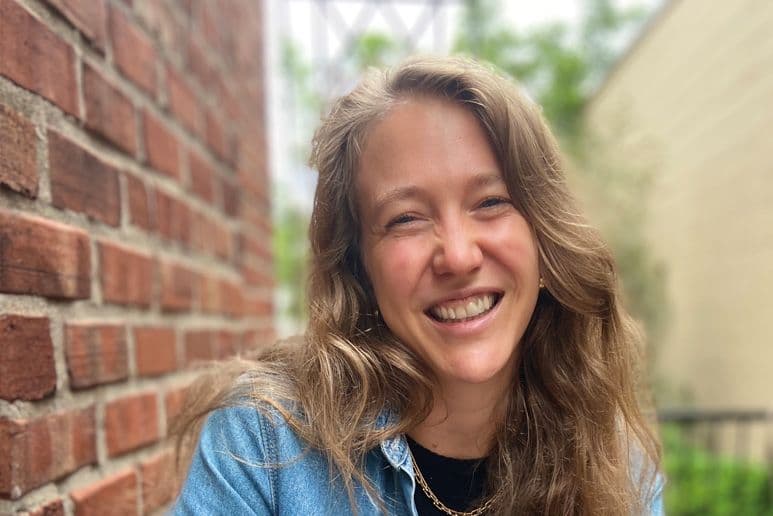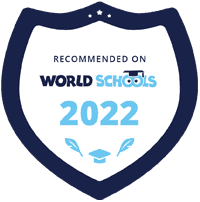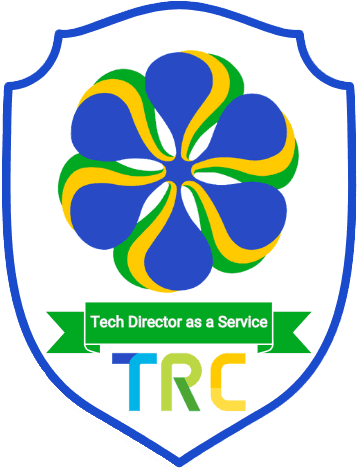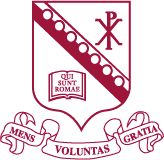DIRECTOR, VISITOR ENGAGEMENT AND RESEARCH AT THE NELSON ATKINS MUSEUM OF ART

Where are you from, and what brought you to Rome?
I grew up outside of Boston, Massachusetts, in a suburb called Newton. I went to a school called Buckingham, Browne, and Nichols (BB&N) in Cambridge. BB&N has a longstanding semester abroad program, and they offer a few options of where students can go both in their sophomore and junior years. St. Stephen's was one of those options. I was the youngest of four kids, and all of my siblings had graduated high school and left the house, so I was desperate for an adventure and to not be the only child in the house. So I studied abroad at St. Stephen's for one semester, my junior year of high school.
Can you describe what your time at St. Stephen's was like or share any particularly fond memories?
What drew me to the program was that it wasn't a specific study abroad program. The other programs were programs where a group of 20 students as a cohort all together have an experience. I liked that St. Stephen's dropped me into an international high school along with some international students studying abroad, but mostly I was going to high school with a group of kids who lived in Rome. And so that was exciting and also really nerve-wracking. I didn't speak any Italian. I remember showing up and being overwhelmed by the number of languages the kids spoke.
Coming from the States, that was not a part of my high school experience. I took my first art history class in Rome with Pamela Christie. That is certainly a very fond memory. We would go on field trips every Wednesday, and that was how I saw so much of the city because she got us out into the city to visit places that I would not necessarily go to as a teenager. I had freedom and independence for the first time in a tangible way as a 16-year-old in Rome. I recall being able to adventure, explore and have a sense of independence in the city.
That's a good point; I remember having a similar experience when I first came to St. Stephen's as a boarder my junior year, and I had never had so much freedom to explore a city. And then, of course, you came back to St. Stephen's after you graduated from Vassar College, and you were my art history teacher when I was a student. What drew you back to the school?
St. Stephen's was incredibly formative for me. To be 16 years old, living in Rome, being independent, and falling in love with a subject was eye-opening and exciting. I was an Art History major in college. I credit my first class at St. Stephen's as a primary reason I work in the arts. So then I went to college, and many people at my college studied abroad during junior year. I realized I did not want to study overseas because I didn't want to give up a semester at my college. I felt I had already had that when I was 16, and I knew that I wanted to live overseas the next time I went abroad. That was a big piece for me. I was interested in education, and I loved St. Stephen's. Rome gets in your bones, and it's hard not to go back once you've lived there.
Was it strange for you to return to your former high school as a teacher? Yes. I know exactly what you mean—having you as my art history teacher inspired me to study that subject and come back and teach at St. Stephen's when I graduated from college.
It was incredibly strange. Number one, it was weird to be a young teacher, I was 23, and I was teaching seniors, and they would say to me, "you're not that much older than us." And I would tell them, "wait until you get through college and then come talk to me" [laughs]. I had a lot of insecurity about feeling like the youngest person. I remember running into one student on one of my first days as a teacher, and the student looked at me and asked, "are you new? Do you need a tour?" So it was strange, and the funny thing was that some things had not changed from my time as a student while other things had. The bar, for example, used to be run by students. So there was a kind of familiarity with the place, but it also felt different to see it from the other side.
Wow. I had the same experience when I came back to teach. Let's talk about what you've been up to in recent years. This past March, you were a panelist in our current “Future of Art” alumni panel. During the panel, you discussed the Interpretation Team’s project of rewriting the permanent collection gallery labels at the Nelson Atkins through a harm reduction lens. For those who did not attend the panel, could you share why you decided to do this and perhaps share an example of how you rewrote a particular label and how the community received the new label?
So this project came about in the wake of Black Lives Matter and the protests erupting all over the U.S. after the murder of George Floyd. There was this big cultural moment in the summer of 2020 when many institutions and a lot of people were having conversations about racism and whiteness in a way that hadn't previously been present in the general dialogue. Museums were called out in those conversations for a good reason. We are generally pretty white institutions often founded on a colonialist legacy, so we have a lot to reckon with and account for. It was also the summer of 2020, the height of the pandemic, budgets were slashed, we weren't doing programs or exhibitions, and everyone was trying to figure out, "what exactly is our role and how do we respond?" So my team, the Museum's Interpretation team, came up with this idea to discuss the question, "what do we mean by harm and how can museums do harm?" with our curatorial colleagues. We asked ourselves, "how is it that labels in our institution might misuse language or assume knowledge or write from a certain perspective?" "Are we ignoring people's histories or ignoring their identities?" In many museums, the labels have been on the walls for twenty years, and they are outdated in terms of language and the stories we tell. So we started a project with our curatorial colleagues where we identified, "what are the stories we want to tell? What kinds of subjects come up in Art History that we should address head-on, and what are we missing from our galleries that might make people feel misrepresented?" And then, we went about identifying labels and rewriting from there.
The project is ongoing; it's a work in progress. We have a broad collection: East Asian, South Asian, Native American, European, Modern, Contemporary, African, Photography, et cetera. There is a work in our Native American collection by a Lenape Delaware artist, a native woman, and the label opened with, "this work of art by a Delaware woman was made in Kansas." And then, it goes on to talk about the significance of the work, and we realized that in this label, we mention her being in Kansas but nowhere in the galleries do we talk about the forced removal of indigenous people from their land by the U.S. government, which is how a woman from a Delaware tribe, on the East Coast, comes to be in Kansas. This is a shared history of many native people in the United States. It was almost like we had hinted at that history but then not said anything, and we realized that we were erasing a specific, violent history associated with these artists. Hence, we rewrote that label to talk about forced removal and why this artist would be in Kansas, and then we discussed the object's significance. So that is one example, and it's important to acknowledge that we're not condemning these objects or the museum. It's about making sure people's histories are recognized because often, the stories that we tell in museums are white people's stories, and we don't look at other groups.
Has the rewriting of these labels led to more extensive conversations at the Nelson Atkins Museum or in the Kansas City community?
It has. At one point, I gave a presentation about this effort to our Strategic Leadership Team. Our Head of Design emailed me the next day and asked if I would present to the Design Department because he thought this might have implications for how we think about accessibility, who we're including, and what we write in our marketing materials. So that was exciting. It has also informed many of the exhibitions we've put on in the last two years. We did an exhibition about the early history of the Nelson-Atkins during our first 20 years of collecting. The trustees of this museum were three white men who frankly did not know much about art, and they engaged experts to help. One of those men was named J.C. Nichols. He was responsible for creating racially restrictive housing covenants, which segregated Kansas City and were then used by real estate developers across the United States. We still see the effects of this practice today. Redlining. So, for our exhibition, we had a panel to acknowledge his legacy in this city and his connection to the Nelson-Atkins. I think that was a big step for us to address that head-on and be transparent. As the pandemic eases and budgets get a little bigger, we're all looking forward to gallery reinstalls and how we might push this forward. It has become a framework that has helped us think about and discuss exhibitions in a new way.
It's lovely that the museum and the wider community have supported this new approach. To continue this discussion of your work at the Nelson Atkins, could you share what you enjoy the most about your job?
"Interpretation" is everything that helps you understand the museum's content, and it involves working with curators to make their content relevant, accessible, and engaging. I always say that I think I have the most fun job at a museum because I get to think about, "why did these objects matter, and what is their relevance today?" We get to be super creative with the ways we do that. For example, we launched a podcast this winter: “A Frame of Mind,” which was a new way to think about interpretation outside the galleries and how we tell long-form audio stories. Check us out where you get your podcasts!
At heart, I'm an art historian, my BA and my MA are in art history, and I enjoy learning about art history and working in a large museum with a variety of collections. Here, I get to be a generalist. Every single exhibition I work on, I'm learning about a different area of art history, and I think for me, coming out of graduate school and deciding to go into the museum field, I didn't want to be a curator or an academic because I didn't want to specialize. My current job lets me not specialize but still constantly be learning, and it kind of feels like taking many art history courses at once whenever I am working on an exhibition.
That makes perfect sense; I love the idea of being able to learn new things constantly. So, my next question is broad but feel free to answer however you see fit: what would you say has been your greatest achievement thus far, either professionally or personally?
I think it's so hard for me to say because there have been these big goals that I have worked towards. I find it hard to step back and think about my achievements. One very nerdy achievement comes from when we started a project on harm reduction, and my boss suggested that I write about the process. So I wrote four blogs and didn't know if anyone would read them, but within the museum field, they went viral [laughs], and all of these people started reaching out. Curators from other museums wrote and asked, "can you talk to us about this?" And then the nerdiest part is that there is this woman, Beverly Serrell, who wrote a book called "Exhibit Labels," and she is the museum label person. If you work in museum interpretation, you know her name, and I got an email from her saying, "can I talk to you about this? And would you be willing to write a case study for my upcoming book about this?" That was a very exciting achievement for me to realize that our team did work that other people cared about.
That's incredible. Congratulations. So, now that you have shared the best moments of your professional career, I have to ask you, has it been a straight path for you in terms of achieving the goals you set out to achieve, or has it been more of a winding path and if so, could you talk about what some of the challenges have been and how you have moved past them?
My mom always said, "life is only a straight line in retrospect." I've always kept that in mind. I can trace a straight line for you, but it has not felt straight along the way at all. I graduated college without a job and moved to New York. When I first contacted the previous Head of School about working at St. Stephen's, there was no position available, but I kept hounding and being like, "do you have something for me now?" If I hadn't done that, I think things would have gone in a different direction. I came out of my MA program having no idea what I wanted to do.
I found the interpretation position in Philadelphia, not knowing what museum interpretation was. But I'm glad that I fell into that. Philadelphia was great in many ways, but the work environment didn't suit me at the end of the day, so I applied for a job at the Nelson Atkins, not knowing anything about Kansas City or really anything about the museum except that it had a great collection and education department. I came out here and was blown away. I moved to Kansas City knowing absolutely no one [laughs], having no connections here, and thinking, "this just feels like the thing I'm supposed to do." So I think challenges for me have often been about taking risks and pushing myself to do something. It may not be safe, but I should try it because it's worth trying something new. I even remember when I lived in New York, and I got the job in Rome, and my family said, "you know, you have a job in New York, and you have friends there; why would you leave all of that?" And my response was, "why not? I'll move back to New York if it doesn't work out.” And I think that's how I felt about Kansas City; if it doesn't work out, I'll leave. It's important to be open to different possibilities.
This is so great for our students to hear because they need to know that most of us do not have it all figured out when we graduate from college, let alone when we graduate from high school. Is there a piece of advice you could share with our graduating class of 2022?
Well, some people at 18 know what they want to do but keep yourself open to every opportunity available to you because things will come along that you may have never expected. So don't close doors too soon and along those same lines, talk to as many people as you can about what interests you, what feels exciting, learn about what different jobs are out there, and what various opportunities are out there. I've learned that most people if you could call them, they're willing to talk, and St Stephen's has a diverse alumni network, so use that as a resource!






